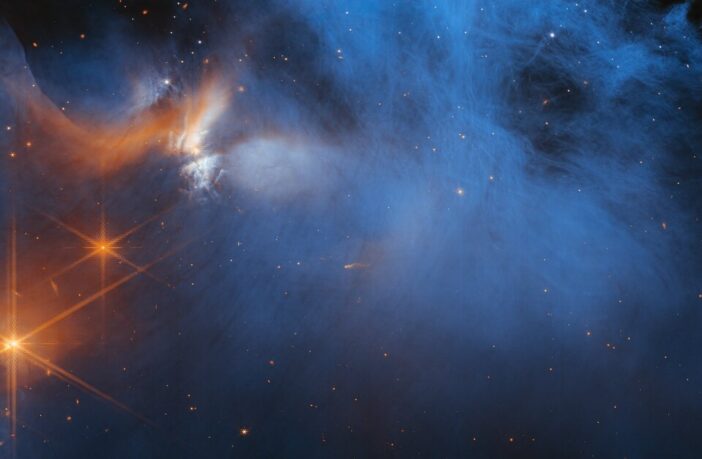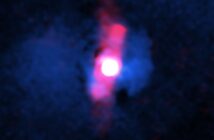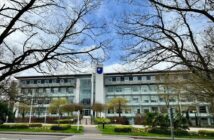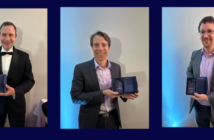The discovery of diverse ices in the darkest, coldest regions of a molecular cloud ever measured has been announced by an international team of astronomers – including from the OU – using the NASA/ESA/CSA James Webb Space Telescope.
This result, published today in Nature allows astronomers to examine the simple icy molecules and open a new window on the origins of the building blocks of life.
The team, comprised of scientists from the OU, Sussex University and Herriot Watt University, was led by Dr Melissa McClure of Leiden Observatory, Netherlands. This research forms part of the Ice Age project, one of Webb’s 13 Early Release Science programs.
In this study, the team targeted ices buried in a particularly cold, dense and difficult to investigate region of the ‘Chameleon I’ molecular cloud, a region roughly 630 light-years from Earth.
Researchers at the Open University play a pivotal role in the Ice Age Webb Team. Helen Fraser, Zak Smith and Hugh Dickinson in the School of Physical Sciences were all involved in the study, using OU technology to process Webb observations and employing data from the OU Astrochemistry Laboratories to analyse ice and identify molecules.
“Even though we detected more ice than ever previously reported, the amount of ‘light elements’ (carbon, hydrogen, oxygen, nitrogen, and sulphur) present within them is still less than we expect” explained Helen Fraser, an astronomer at the Open University involved in this research.
“For astronomers that is exciting, because it means there is something we don’t yet fully understand about interstellar chemistry; and that challenges us not just to keep observing, but also to experiment in the laboratory.”
The OU has been leading the preparations and subsequent analysis within the IceAge team. This recent paper also features the work of Zak Smith, a 3rd year OU PhD student, coupling his observational skills with the computing, machine learning and statistical expertise of Hugh and Helen’s strong background in ice chemistry and physics.
“Our data was generated from three different instruments on Webb”, added Zak Smith, who has spent the last 6 months of his thesis focusing on extracting from Webb observations. “The data are unparalleled in their resolution and detail; I was completely inspired to see how my own information complimented that from Webb and was used produce the final results.”
On the OU’s contribution, Dr McClure added:
“The OU team, led by Helen Fraser, has been critical to the success of our paper. They have specialised expertise with ice experiments both in the laboratory and in space, allowing Fraser’s group to develop the best possible plan and specialised software for regions with nearby stars.
These preparations are essential to realise the most ambitious and largest part of our Ice Age program. We only expected to see about 150 background stars, but instead we see closer to 700.
“Fortunately, the years of dedicated effort and expertise of Fraser’s team mean that their software can handle such a large number of targets.”
“This is just the first step in the ‘Webb Ice Age” concluded Dr Fraser.
“We are already looking at even more data, probing more background stars to study clouds, and newly forming stars. These observational snapshots, together with new laboratory data, will help us explain how ices evolve towards the materials that eventually form the oceans, surfaces, atmospheres and cores of exoplanets”
The Ice Age team have already planned further observations and hope to trace out the journey of ices from their formation through to the assembly of icy comets and cores of rocky exoplanets.



